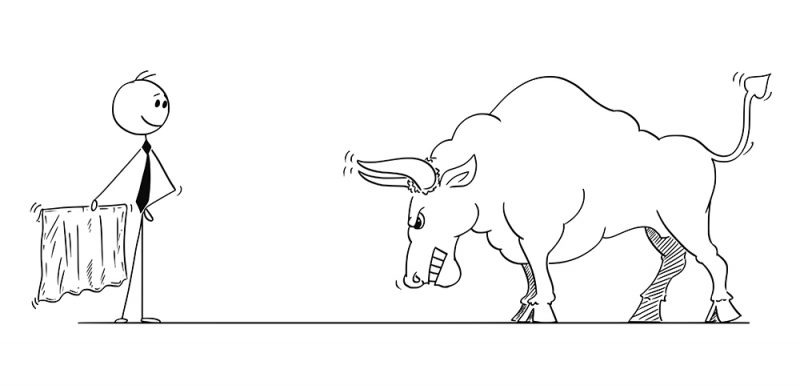Blog Short #54: Relationships That Drain You
Welcome to Monday Blog Shorts – ideas to make even Monday a good day! Every Monday, I share a short article with you about a strategy you can use, or new facts or info that informs you, or a new idea that inspires you. My wish is to give you something to think about in the week ahead. Let’s dig in!

Photo by dragana991, Courtesy of iStock Photos
Have you had a relationship with someone that regularly takes advantage of you, demands or cajoles you into giving and giving and giving, and gives little to nothing back? People who do this drain you. They’ll take everything you’ve got and still be discontent and complain. They want more.
The problem is they’re never satisfied.
If you meet their demands, they might temporarily seem content, but in no time, they create a new situation that requires another outpouring of attention and care. There’s no end.
Unfortunately, these situations occur most in close relationships. Spouses, adult children, parents, or close friends are the most likely culprits of this kind of behavior.
So what do you do if you find yourself in this place?
There are two parts to this:
- Recognize and confirm for yourself that this is happening.
- Apply boundaries to see if the relationship is viable, or decide if you need to leave.
Let’s go through them both.
Raise your awareness of what’s happening.
One of the difficulties of being in relationships like this is that you become enclosed and cut off. By that, I mean that you spend most of your time reckoning with the other person’s demands and diminish your access to other people.
The effects of this are that you find yourself questioning your perceptions. You make excuses for the other person. Or maybe you chastise yourself and think you aren’t giving enough. You may go back and forth between feeling guilty and being resentful and angry.
Most people who take advantage in this way know all of this and cash in on it. As long as you feel a sense of responsibility and guilt, the behavior continues.
Ask these questions to help clarify what you likely already know:
- What do I get from this person that’s of value to me?
- Is this person concerned about my well-being, my feelings, or my needs?
- Does this person check in with me about how I’m doing?
- Do they get angry, or pout, or manipulate if I’m not meeting every demand?
- Would this person ever take care of me the way I’m taking care of them?
- Do they make real efforts to take care of their own needs?
- Do they sabotage themselves (and you) by not taking responsibility for themselves?
In a good relationship, there is reciprocity of concern, and both people have respect for the other and care about the other’s well-being.
Sometimes, one person needs more temporarily, but always the pendulum swings back the other way. You trust that give and take will always be there because you each value the other’s happiness.
With people who drain you, there’s no give and take. They’ll drain you dry and ask for more and make you feel guilty if you can’t find more to give. They’re heavily dependent.
It’s crucial as a first step to truly see what’s going on and know that you’re being taken advantage of, used, and likely manipulated. If you don’t get clear on this, you’ll fall back into feeling guilty and continue on.
It helps to talk to someone you trust who can be objective. A friend is fine if they’re able to let you speak without overriding your feelings with their own. A therapist is always a good option.
Now for the second part.
Do I stay or leave?
There are two things you can do.
- The first one is to begin setting boundaries.
- The second is to make a decision to leave the relationship.
Let’s start with boundaries.
Setting Boundaries
You may feel that you can’t leave the relationship. For instance, if the problem exists with an adult child, you will likely feel very uncomfortable cutting the relationship off. You may even feel that way with a spouse or other family member.
In this case, setting boundaries is the best option. You want to see if you can salvage the relationship. Sometimes a needy person will change their behavior to avoid the loss.
I would suggest getting a journal for this so you can write out your thoughts and ideas. Start by getting very clear on:
- What expectations of you are unreasonable?
- What behaviors on the other person’s part are contributing to the problem and could be changed if they were willing?
- What behaviors on your part are contributing to the problem?
- If you could change the relationship to reflect mutual respect and concern, what would that look like? Get very specific. What would it take for you to feel comfortable and “good” in this relationship
Once you have a handle on all of that, have a frank conversation with this person. Calmly spell out your feelings and thoughts about what changes you need to see made and why. Describe in detail what expectations you have in terms of new behaviors and cooperative efforts on both your parts.
Don’t blame or accuse.
Use “I” statements only and speak of what you need and what you won’t allow. If the relationship is viable, the other person will respect what you have to say even if they don’t agree right away. Some people say no before they say yes, and that’s all right as long as the changes come along.
For you, the hard part is to hold the line. You’re battling patterns that have become institutionalized in your relationship and likely come from your history. A good outcome will include negotiation and consideration on both your parts as you seek to make real changes. Again, I would suggest some counseling to help you work through the process.
Leaving the Relationship
Most of the time, we try to salvage the relationship before deciding to leave it. Occasionally, you’re already there and don’t need to think about it, or something happens that pushes you to that point, and you make the decision to leave.
Some relationships are much easier to leave. For example, if you have a friend who has been the taker in the relationship for a long time without giving you much back, you might more easily decide to stop interacting or spending time with this person.
A marriage or family relationship is different and takes more thought. These are harder to navigate, and if you’re struggling, you really should seek some counseling.
Things To Remember
Here are several things to keep in mind that might help:
- Real love is holding those dear to you accountable for their behavior.
- Self-respect comes from setting boundaries with others against manipulation, being used, or being abused.
- Relationships that last are characterized by mutual respect and concern for each other’s well-being. It can’t be a one-way street.
- Everyone is ultimately responsible for themselves. It’s up to each of us to do all within our power to take care of ourselves and to consider the feelings and needs of those we love.
That’s all for today. I hope you have a great week!
All my best,
Barbara








